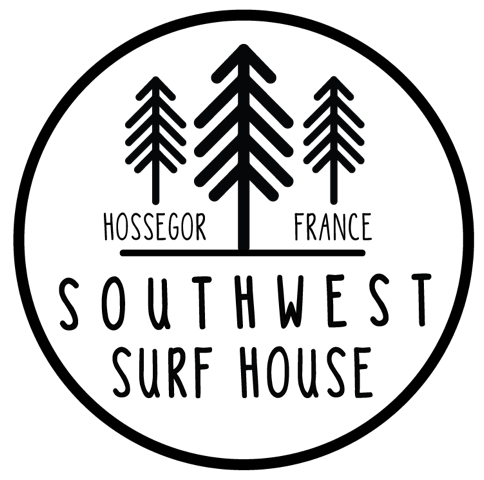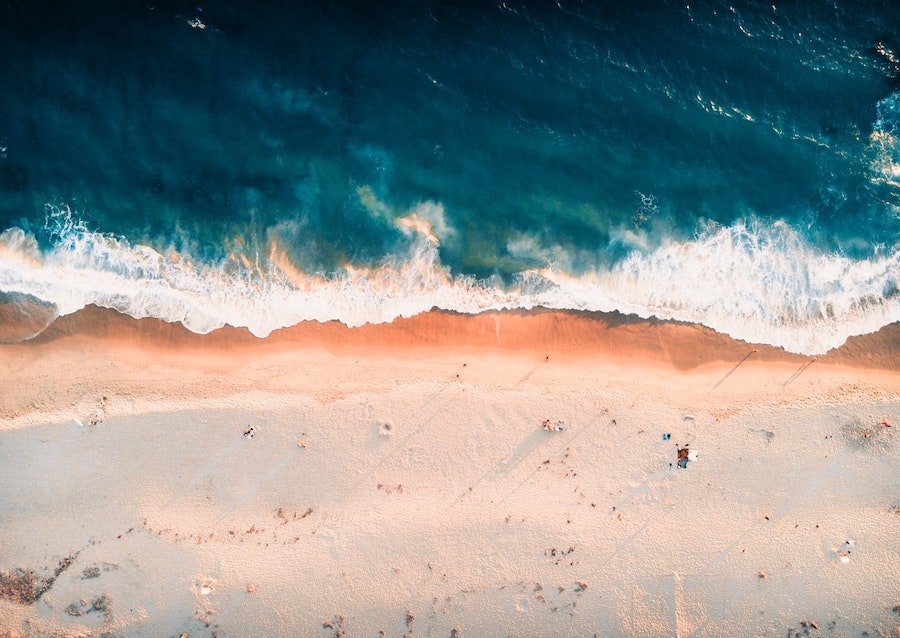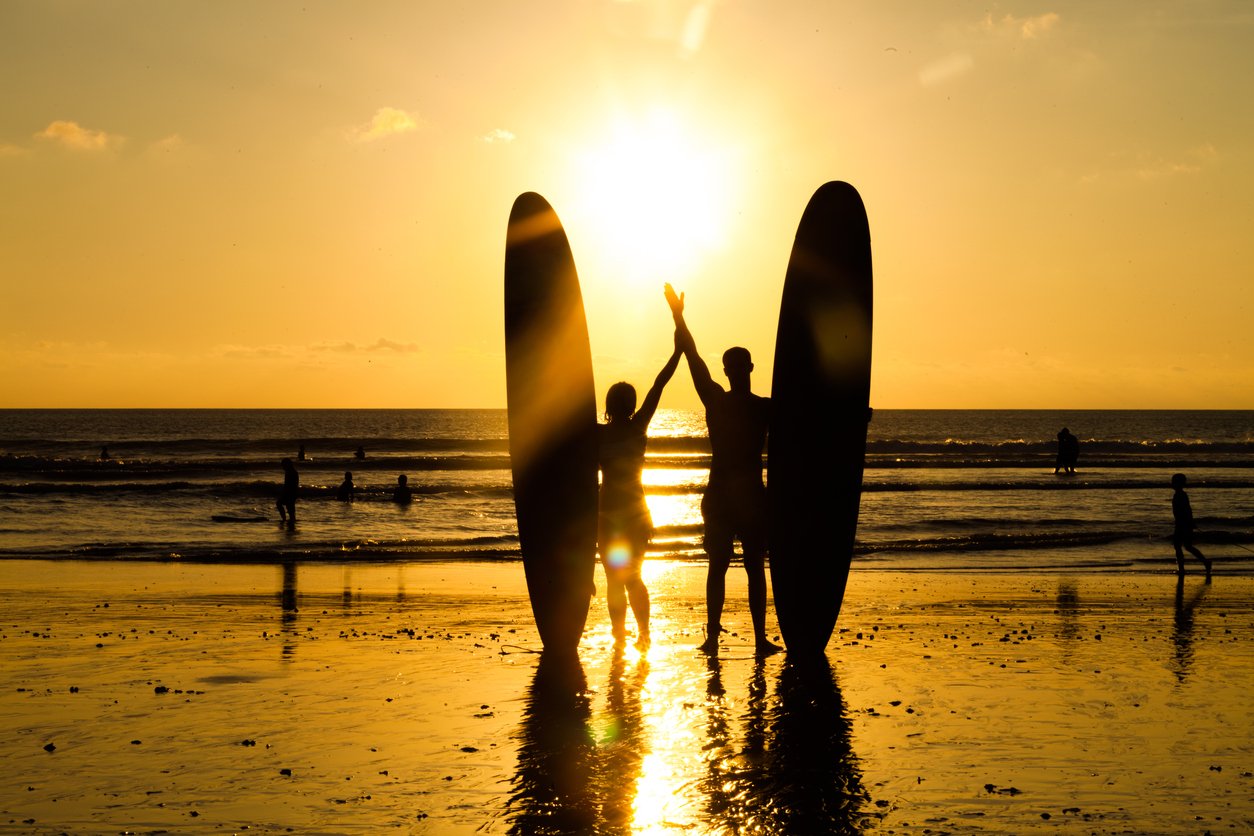Looking to try something new this summer? Why not give longboard surfing a go?
This beginner's guide will teach you everything you need to know about how to get started at longboarding and have a blast while doing it. From choosing the right board to finding the best surf spots, we'll make sure you don’t rock up in France a total kook!
So what are you waiting for? Get out there and learn to surf in the stunning surf town of Hossegor with these helpful tips for longboard surfing.
1. Get to know your longboard
The longboard, also known as the "Malibu" or simply a "longboard surfboard", is a type of surfboard that is typically much longer and larger than other types of boards.
It was originally made thousands of years ago by early Polynesians and further refined in the late 1800s for surfing big waves, such as those found at Waimea Bay in Hawaii. Longboards have since evolved into an all-around board used by many different people for various purposes, including surfing smaller and longer waves.
When you visit Southwest Surf House, you'll begin your learn to surf journey on a foam longboard.
The board has a soft deck and bottom. This makes them buoyant and safe to use, which means beginners such as yourself can learn with peace of mind and progress quickly.
2. Choose the right gear for longboard surfing in France
While there are days that you can wear a bikini/boardshorts and wetsuit top while longboarding in Hossegor, for most of the year the water is quite cold.
This means you'll need a wetsuit, and it's recommended to have one that is full-length (otherwise known as a steamer) to keep your whole body warm.
However, you might want to wear a short arm, short leg wetsuit in the summer months when it's warm and sunny - if only for the reason that they make lying on the deck of your surfboard more comfortable.
Either way, Southwest Surf House have you covered. We stock a bunch of excellent quality wetsuits for both men and women in a variety of sizes.
This means you needn't buy or bring a wetsuit to our house. Instead, you can simply grab one from our surf gear shack and hit the waves.
For more information about the best time of the year to surf in Hossegor and what equipment to bring, check out this helpful guide.
3. Learn the basics with an experienced coach
Another one of our favourite tips for longboard surfers is to learn the fundamentals with an experienced coach.
This is key because they can help you with proper form and technique. They will also be able to give you tips on how to stay safe while surfing and info about the different parts of the wave, which is especially important given that the ocean might be unfamiliar territory for many beginners.
When it comes to finding a suitable coach or surf school, look for one that has a good reputation and positive reviews. Also, ask around for recommendations from friends or family who have experience with surfing.
They'll be able to point you in the right direction.
Once you've found a coach, take some time to ask them about their teaching style and what they focus on. This will help you decide if they're the right fit for you.
And lastly, don't be afraid to try out different coaches until you find one that you're comfortable with. Or just book a stay at Southwest Surf House and enjoy learning to surf with our partner surf school.
4. Find the right spot to surf
It might be hard to discern at first, but not every wave is appropriate for beginner longboarders.
Some waves might be really dumpy while others could be too powerful. The wave best suited to beginners will have a gentle slope without being overly crowded.
One of the best beginner surfing tips is to look for waves that are breaking at least 100 metres from the shore. This will give you plenty of time to paddle out and catch the wave before it breaks on the sand.
You might also want to look for a spot where other longboarders are surfing. Once you identify this spot, sit down on the beach and watch them for a while.
Chances are that if they’re out there and catching waves, then the waves are good for the board and it's okay for you to paddle out.
If you’re still having trouble finding the right spot, you can always ask a local surfer. They’ll be more than happy to point you in the right direction and might even give you some longboard surfing tips on technique.
You can also check out this handy article on beginner surfing spots in France.
5. Respect the locals
One of the most contentious aspects of surfing is the concept of localism, however, there is some merit to it.
People who've grown up at a beach or near a particular surf spot might feel protective over it.
On one hand, this is a positive because it means that the locals are looking out for the safety of everyone in the water and the cleanliness of that particular spot. On the other hand, localism can lead to aggression and territorialism, which is not what surfing is about.
If you are new to an area, it's best to do your research beforehand or speak to someone at a local surf shop. As always, try to be mindful and respectful of everyone in the water, whether you're on the wave, paddling out or on land.
6. Try to book multi-day surf experiences
It's possible to pick up the basics of longboard surfing in one day. It's even possible that you'll master them in just one session.
For the majority of us though, learning to surf on a longboard is incredibly difficult. In fact, it might just be one of the most difficult things you ever do.
This is why it's important to book multi-day surf experiences. This will give you the time you need to really learn how to longboard and enjoy this amazing beginner surf location. More importantly, though, it will allow you to iron out any deficiencies and get a good command of the board and the basics.
By booking a surf trip with multiple lessons, you'll also get to build a relationship with your instructors. This is incredibly important, as they'll be able to give you longboard surfing tips and help you progress much more quickly than if you were to simply surf with them for just one session.
They'll also teach you about the different parts of the wave, which will no doubt help when you begin surfing on your own.
7. Be aware of your surroundings
We all dream of uncrowded waves with only our friends and a sunset in our field of vision, but the truth is that learning to surf on a longboard is one of the most popular summer activities in Europe.
For this reason, there can be days when the lineup is packed with people. This can be really hectic if you’re not used to it. The good news is that you can greatly reduce the risk of getting in somebody's way or having an accident by being aware of your surroundings.
This means keeping an eye on the other surfers around you, as well as any obstacles in the water while you're on the board.
Of course, this won't come naturally at first, but as you progress you'll be able to keep track of everything without even thinking about it.
8. Study the rules of surf etiquette before you paddle out
Have you ever heard of something called surf etiquette?
We’ve covered it before. It's basically a set of unspoken rules that all surfers should follow in order to keep everyone safe and have a good time.
Trust us, you don't want to be the one guy or gal who doesn't know the rules and causes an accident. It's embarrassing to be caught in a tangle of boards and bodies, but more than that it's really dangerous. A few basic surf etiquette tips include:
Know your limits
Don't drop in on someone else
Respect the locals
Never paddle out straight through the lineup
Don't leave your trash on the beach
Pro tip: a good surf school will teach you all about surf etiquette and how to handle the board in a crowded lineup as part of their classes.
9. Improve your skills over time
Here's a tip for longboard surfing that applies to serious devotees: if you want to become the best surfer you can be, you need to improve your skills over time.
This might mean taking lessons from a professional, reading instructional books and watching videos, or simply practising your pop up on the board at home or a yoga mat as often as you can. It might also involve booking more than one stay at Southwest Surf House, but that's up for you to decide.
Ultimately, the more you surf, the better you'll become at it. And who knows? You might even find yourself becoming a surfing instructor one day. So long as you continue surfing and get into the water as often as possible, you'll learn how to ride a wave like a pro.
10. Have fun!
Finally, the last and perhaps most important tip for longboard surfing is to have fun on the wave!
Learning to surf and mastering the basics on a longboard is challenging, but it'll be one of the most rewarding things you ever do. Not only can learning to surf on a longboard make you fitter and happier, but it'll also connect you with nature in a very special way.
So go out there, enjoy the waves and don't forget to have fun! That's what being a longboarder is all about!
CTA: Learn to surf on a longboard by booking with us today





